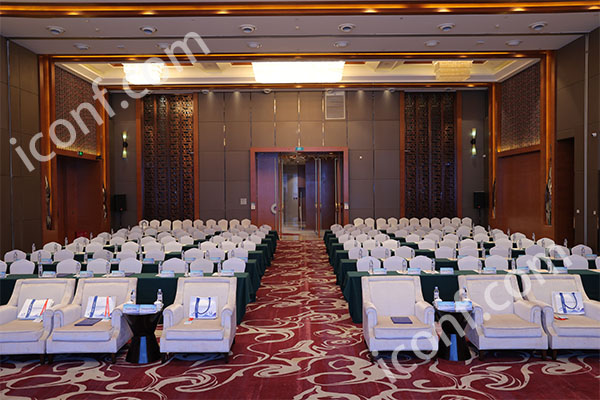

346 views||Release time: Dec 16, 2024
Giving a presentation at an academic conference is an excellent opportunity to showcase your research, engage with experts in your field, and enhance your academic reputation. However, preparing for and delivering a compelling presentation can be a daunting task. Below is a step-by-step guide to help you successfully present your work at an academic conference.

Before preparing your presentation, consider the type of audience you will be addressing. Understanding their background and expectations can help you tailor your presentation effectively.
Audience Expertise Level:
Are they experts in your specific field or do they come from broader academic backgrounds? Adjust the level of detail and technicality based on this.
Interests and Expectations:
Some audiences may be interested in practical applications of your research, while others may focus more on theoretical aspects. Clarify your objectives and make sure they align with the interests of the conference participants.
A well-structured presentation is key to keeping your audience engaged and ensuring your message is clear. Follow these steps to organize your content:
Introduction (1–2 minutes):
Research Questions and Objectives (2–3 minutes):
Methodology (3–5 minutes):
Results (5–7 minutes):
Discussion and Conclusion (3–5 minutes):
Visual aids play a critical role in supporting your presentation and making it more engaging. Here are some tips for designing effective slides:
Simplicity and Clarity:
Keep slides clean and straightforward. Avoid cluttered text or excessive data. Use bullet points for key concepts and keep the font large enough for easy reading.
Use High-Quality Graphics:
Visual elements like graphs, charts, and diagrams should be clear and of high quality. Ensure that they are properly labeled and easy to interpret.
Consistent Formatting:
Use a consistent color scheme and font style throughout your presentation. This helps maintain a professional and cohesive look.
Limit Text on Each Slide:
Use slides to highlight key points, but do not overload them with text. Aim for no more than 5–6 bullet points per slide.
Practice is key to delivering a confident and engaging presentation. Here are some strategies to ensure a smooth delivery:
Rehearse Your Speech:
Practice your presentation several times before the conference. Familiarize yourself with the content and flow so that you can speak naturally and confidently without reading from your slides.
Time Yourself:
Make sure your presentation fits within the time allotted. If you are given 15 minutes, aim for 12–13 minutes of speaking time, leaving room for questions and discussion.
Body Language:
Maintain good posture and use hand gestures to emphasize key points. Avoid fidgeting or reading from your slides too much, as it can make you appear disengaged.
Engage with the Audience:
Make eye contact with the audience to create a connection. If you’re presenting virtually, look into the camera to simulate eye contact with the viewers.
Conferences often have a Q&A session after each presentation. Be prepared to answer questions from the audience.
Anticipate Questions:
Think about potential questions or critiques that could arise based on your research. Prepare concise and clear answers.
Stay Calm and Professional:
If you receive challenging questions or feedback, respond calmly and respectfully. If you don’t know the answer, it’s okay to say so, but offer to discuss the topic further after the session.
Encourage Discussion:
Use the Q&A session as an opportunity to engage with others in your field. Be open to feedback and suggestions, as they can help improve your research.
Ensure that you are familiar with the technical setup for the conference presentation, especially if it is an in-person event:
Audio-Visual Check:
Arrive early to check the audiovisual setup. Make sure your slides work properly with the projector or screen, and ensure the microphone is working if applicable.
Backup Copies:
Bring backup copies of your presentation on a USB drive or store them in cloud storage to avoid technical issues.
Virtual Conferences:
For online presentations, test your internet connection, microphone, and camera beforehand. Ensure your software platform (Zoom, Teams, etc.) is functioning correctly.
During the conference, engage with other presenters and attendees to foster a professional network. Be respectful of others’ presentations, and take notes during sessions that are relevant to your research.
Post-Presentation Networking:
After your presentation, take the opportunity to network with other researchers and exchange ideas. This can lead to future collaborations and further discussions on your research.
Follow Up:
If someone asks for more information about your work or provides insightful feedback, follow up with them after the conference to continue the discussion.
Presenting at an academic conference is a fantastic opportunity to share your research with a global audience, receive feedback, and enhance your academic profile. By preparing effectively, designing engaging visuals, practicing your delivery, and staying open to feedback, you can ensure your presentation is a success.
For a comprehensive list of upcoming academic conferences, visit iconf.com. Stay informed about key dates, registration details, and conference topics that match your area of research.
Join iconf.com today and take the next step in your academic journey!